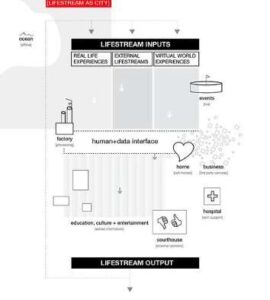Contents
- What is Volatility? A Simple Explanation for Kids, Teens and Beginners
- Types of Volatility
- Consider Market Volatility an Opportunity
- Historical Volatility
- Why is volatility important? And how should I deal with it?
- Causes of Price Volatility
- Download Transcript: Ideal for Use by Teachers in their Lesson Plan to Teach Kids & Teens
There are a number of ways to measure and interpret volatility, but most commonly, investors use standard deviation to determine how much a stock’s price is likely to change. Volatility is determined either by using the standard deviation or beta. Standard deviation measures the amount of dispersion in a security’s prices. Beta determines a security’s volatility relative to that of the overall market. It is common knowledge that types of assets experience periods of high and low volatility.

From equities, fixed income to derivatives, the CMSA certification bridges the gap from where you are now to where you want to be — a world-class capital markets analyst. Divide the squared differences by the total number of prices in the set . Periods when prices fall quickly are often followed by prices going down even more, or going up by an unusual amount. Also, a time when prices rise quickly may often be followed by prices going up even more, or going down by an unusual amount. The Cboe Volatility Index, or VIX, is an index created by Cboe Global Markets, which shows the market’s expectation of 30-day volatility.
What is Volatility? A Simple Explanation for Kids, Teens and Beginners
With increased volatility, the bands will widen and in periods of low volatility, the space between the bands will narrow. So, the standard deviation of Acme Adhesives’ stock price for the five-day why are stock trainer app for traders and how to choose them correctly period in question is $1.69. Some authors point out that realized volatility and implied volatility are backward and forward looking measures, and do not reflect current volatility.
Stock prices aren’t generally bouncing around constantly—there are long periods of not much excitement, followed by short periods with big moves up or down. These moments skew average volatility higher than it actually would be most days. That said, let’s revisit standard deviations as they apply to market volatility. Traders calculate standard deviations of market values based on end-of-day trading values, changes to values within a trading session—intraday volatility—or projected future changes in values. Some assets are more volatile than others, thus individual sharesare more volatile than a stock-market index containing many different stocks. So lower-risk investors might choose to avoid more volatile securities because of the uncertainty over the returns.
Market volatility isn’t a problem unless you need to liquidate an investment, since you could be forced to sell assets in a down market. That’s why having an emergency fund equal to three to six months of living expenses is especially important for investors. Volatility refers to both the frequency with which a security changes in price and the degree to which it changes in price. Typically, the more volatile a security is, the riskier of an investment it is.
Investment advisors and financial planners tend to worry a lot about how much volatility their clients take on. By contrast—it’s extremely unlikely that the U.S. government would ever default on its bonds. If a company has been in the news because it may go bankrupt, its bonds will probably be pretty volatile. It’s important to understand the volatility of any investment you’re considering making as part of making sure that the investment is a good fit for you.
If history is any guide, the presidential election next year is set to inject more volatility into an economy already grinding through a crop drought that’s expected to hurt crucial commodity exports. And volatility is a useful factor when considering how to mitigate risk. But conflating the two could severely inhibit the earning capabilities of your portfolio. Based on the definitions shared here, you might be thinking that volatility and risk are synonymous. Assessing the risk of any given path — and mapping out its more hair-raising switchbacks — is how we evaluate and measure volatility.
Types of Volatility
The biggest and most popular VIX-related investments are the iPath S&P 500 VIX Short-Term Futures ETN which has long positions in futures contracts. There is also the beta (β) method for measuring or calculating volatility. In this method, an underlying asset’s volatility is measured against other related assets. For instance, the volatility of Apple stock can be measured against the overall volatility of other technology sector stocks or even an entire benchmark stock index. Learn more about how this model of volatility assessment is calculated as well as its significance in our risk management guide. Volatility is a statistical measure of the dispersion of data around its mean over a certain period of time.
- During the bear market of 2020, for instance, you could have bought shares of an S&P 500 index fund for roughly a third of the price they were a month before after over a decade of consistent growth.
- Let’s say we want to find the standard deviation of the stock price of a fictional company called Acme Adhesives over the course of a particular five-day trading week.
- The issue is then transferred to that of what level the ups and downs occur.
- A security is said to have a higher level of volatility when its value can change dramatically in a short space of time.
- Because market volatility can cause sharp changes in investment values, it’s possible your asset allocation may drift from your desired divisions after periods of intense changes in either direction.
The stock market tend to become more volatile during bear markets or anytime investors are worried about risk. Volatility describes the size and frequency of an investment’s price swings. It’s important to understand the volatility of your investments because volatility is one of the most important measures of risk. It’s not necessarily better to only invest in low- or high-volatility investments. Instead, what’s most important is to make sure that the whole mix of your portfolio has the right level of volatility for you.
Consider Market Volatility an Opportunity
That is, when the volatility is high, the trading risks are higher and vice versa. When volatility is used in the pricing of financial assets, it can help to estimate fluctuations that are likely to occur over the short term. If an asset’s price fluctuates quickly within a short timeframe, then it is considered highly volatile. An asset whose price moves slower over a longer time period is said to have low volatility. Volatility is a fact of investing life, and it guides or affects various decisions that investors have to make in the market. In general, high volatility implies high inherent risk, but it also means high reward opportunity.
Analysts often use standard deviation as a means of measuring expected risk and determining how significant a price movement is. The easiest way to calculate volatility is to first find the variance of the asset’s value over a set period of time. The variance refers to the statistical range in values the asset has produced.
Under national and regional factors, we have things such as tax as well as interest rate policies, which are factors that may affect volatility. Policies that touch on tax and interest rates can bring significant changes in the market, thus affecting the volatility of that particular market. For instance, lets say a central bank decides to set the short-term interest rates for overnight borrowing by regional banks. When this happens, there will be fierce reactions in their stock market. Next in line are corporate stocks and bonds, which are always desirable but with the caveat that some corporations do better than others. Blue-chip corporations historically perform well and yield a positive return, while small-cap, more growth-oriented corporations might have large returns with periods of high volatility.

Divide this sum by the number of data points in the set (e.g., if the time period is 10 days, divide the sum by 10). Individual stocks can also experience short-term volatility around certain events. Not only the volatility depends on the period when it is measured but also on the selected time resolution. The effect is observed due to the fact that the information flow between short-term and long-term traders is asymmetric.
Historical Volatility
Volatility essentially measures how much the value of the asset changes from day to day, month to month, and year to year, also known as the variance. The statistical average represents the median change in value over a set period of time. While the variance or deviation in value, volatility measures that variance within a unit of time, which allows us to calculate the asset’s daily, weekly, monthly, or annualized volatility. Fun, informative and concise episodes by a 10-year old, breaking down complex financial concepts in a way that kids and beginners can understand. Finally, penny stocks and cryptocurrencies have proven to be highly volatile with huge swings in prices.
If the options prices start to rise, that means implied volatility is increasing, all other things being equal. Implied volatility describes how much volatility that options traders think the stock will have in the future. If the stock price varied widely in the past year, it is more volatile and riskier. You might have to hold onto it for a long time before the price returns to where you can sell it for a profit.
Why is volatility important? And how should I deal with it?
Volatility is the degree to which a security varies in price or value over the course of a particular period of time. In finance, volatility refers to the how frequently and drastically an asset or index changes in price. Determine the difference between each price in the set and the average price.
XYZ, Inc. has a beta coefficient of 1.45, making it significantly more volatile than the S&P 500 index. ABC Corp. has a beta coefficient of .78, which makes it slightly less volatile than the S&P 500 index.
Causes of Price Volatility
Some have noted that while this is true, the underlying reason for the volatility is coming from short sellers and automated trading robots. One approach claims that volatility is the result of psychological forces in the market, where volatility comes about when there is a massive shift web application architecture best practices in investor sentiment and/or perception. No matter what causes volatility it is certain that it does exist and traders must find a way to successfully deal with it. There are a number of methods used to trade volatile markets, but perhaps one of the most popular is the straddle method.
More active, shorter-term investors use volatility to make buy and sell decisions much more frequently. Day traders aim to buy low and sell high multiple times over the course of a single day, and swing traders do the same over the course of days or weeks. Both types of traders use short-term price volatility to profit https://traderevolution.net/ from trades. Volatility is a key variable in options pricing models, estimating the extent to which the return of the underlying asset will fluctuate between now and the option’s expiration. Volatility, as expressed as a percentage coefficient within option-pricing formulas, arises from daily trading activities.
More safe and conservative investments should be used when investing for something with a shorter investment horizon – like down payment on a house. One such strategy is Dollar Cost Averaging, where you invest a fixed dollar amount every month irrespective of market movements. Although volatility is arguably the most important measure of risk, it misses out on some types of risk, such as the risk that your money loses value to inflation over time. Higher volatility means an investment shows crazier price swings, while lower volatility means the investment tends to be smoother in price. On the other hand, perhaps you’re looking to make a bet on an investment that could win big. In that case, you probably want to invest in something with high volatility—though you’ll also have to accept the risk of losing what you invest.
Above all, volatility will impact investing strategy as in general rational investors don’t like too much swing in their investment returns. But extent of this impact will depend on the investment horizon, composition of the current portfolio and investor’s risk tolerance. Share In financial terms, the official share definitionis a unit of ownership of a company or… Risk Looking for a risk definition and want to know what risk means? It is possible to benefit from any type of market if you know how.
Download Transcript: Ideal for Use by Teachers in their Lesson Plan to Teach Kids & Teens
Actual current volatility of a financial instrument for a specified period , based on historical prices over the specified period with the last observation the most recent price. Historic volatility measures a time series of past market prices. Implied volatility looks forward in time, being derived from the market price of a market-traded derivative . Volatility is often used to describe risk, but this is necessarily always the case. Risk involves the chances of experiencing a loss, while volatility describes how large and quickly prices move. If those increased price movements also increase the chance of losses, then risk is likewise increased.
